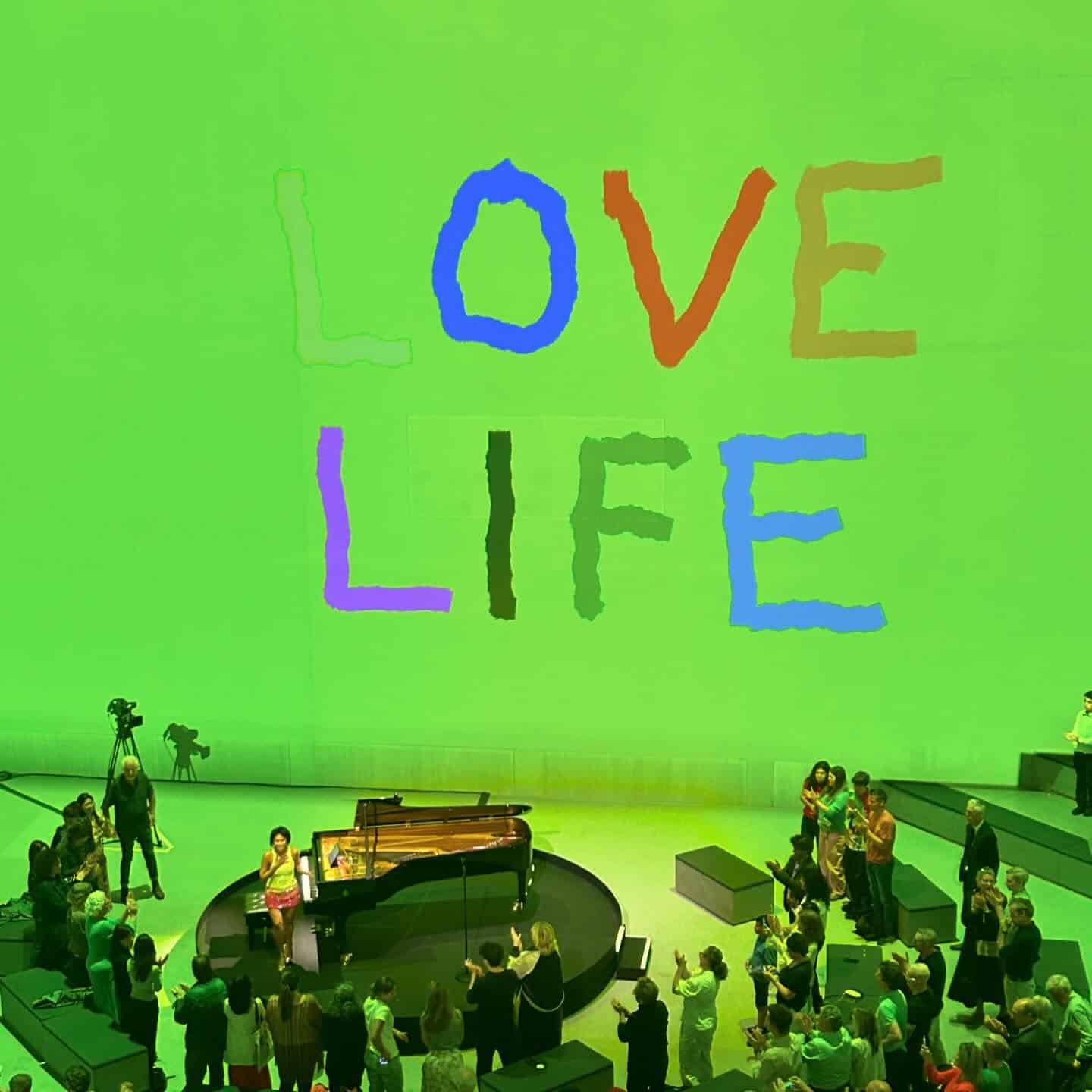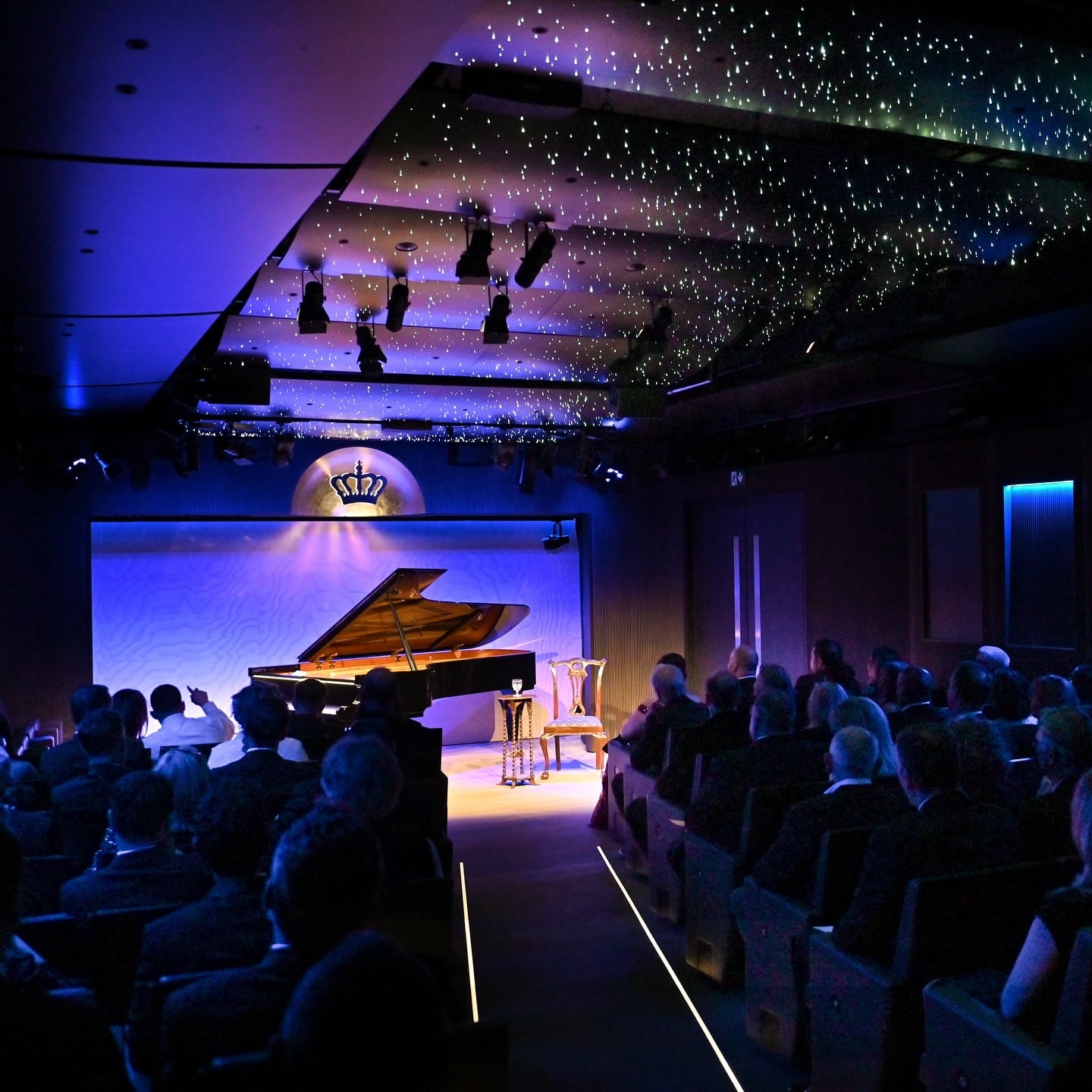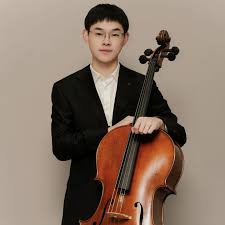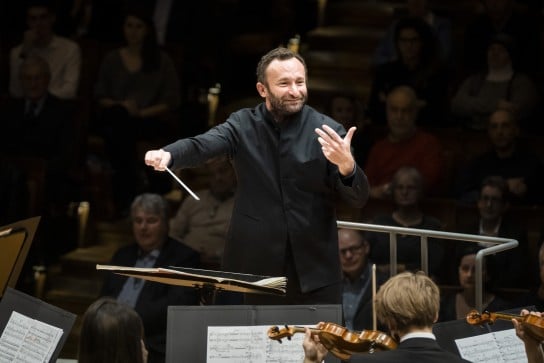Last night at Yuja’s…
NewsMusic editor Ariane Todes was blown away:
Yuja Wang coaxing and thrashing the life out of piano music from Bach to Berio for more than an hour non-stop in a magical photographic box flitted about with the inside of David Hockney’s exquisite imagination was one of the most exciting artistic experiences – musical or visual – I’ve had in a long time.
Each piece timed and coloured to match his mood, each visual fantasy completely different, whether a Bach Cantata illustrated by an Yves Klein-blue stained-glass church window (the beauty and reverence utterly poleaxed me); Rachmaninoff setting off the vastness of the Grand Canyon; or Prokofiev illuminating driving rain and the energy of nature renewing itself.
And then there were the pieces where Yuja herself was the image, her face or hands filling the entire wall, glancing up self-consciously at first, but by the end triumphant and relieved (her teddy-horse hidden in the piano for emotional support). I have never seen the sheer effort and energy of music performance captured so viscerally – in one Busby Berkeley style section, filming her fingers from above, double vision, you could barely see her fingers for blur.
I’m fairly cynical about immersive art shows that cash in on dead painters but when the artist is Hockney, who even at the age of 87 is more curious and innovative than most creators, and when he is as involved as much as I presume he was – he was in the audience – I think it’s an absolute game changer for multimedia projects. They’ve set the bar very high. I was standing in the gallery for £20, which was fine. I’m very glad I went, and very glad that I live in a world that has Hockney in it.






Comments